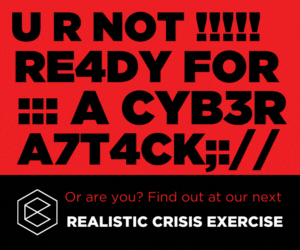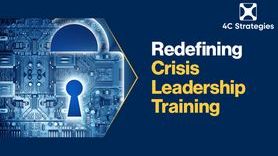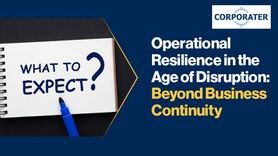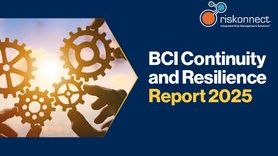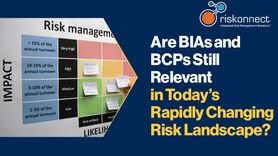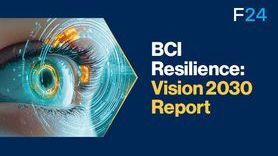Building resilience against blackouts: Lessons from Europe's critical infrastructure disruption
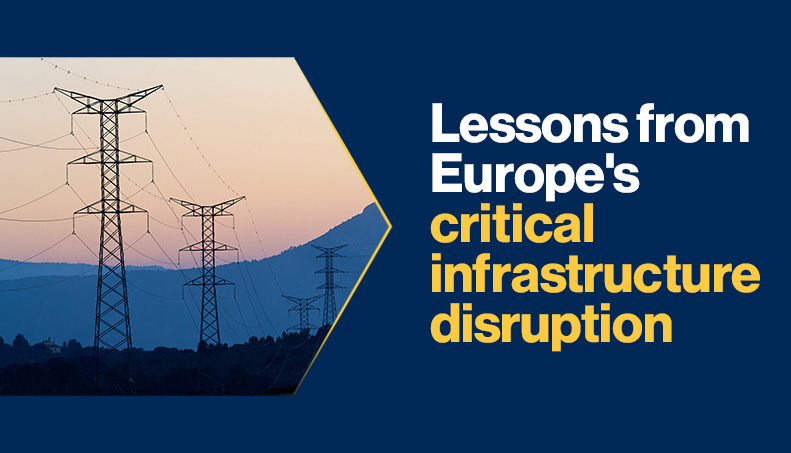
At midday on April 28th, Spain, Portugal, Andorra, and parts of Southern France experienced a sudden and unprecedented power outage. This blackout disrupted a wide range of services such as internet access and mobile networks, paralysed transport systems, and made ATMs and payment systems inoperative. While most power was restored within 24 hours, some systems may still take up to a week to return to normal. While the cause remains unconfirmed, BCM practitioners are focusing on further mitigating the impact and prioritizing recovery efforts
This widespread power outage is a timely reminder of how reliant we are on power and how its loss, even for a few hours, can have far-reaching effects that present critical challenges to the resilience of communities and organizations.
BCI research[1] indicates that IT/telecom outages, and critical national infrastructure (CNI), failures are leading causes of disruption. This trend has persisted for several years, highlighting a constant risk that shows no signs of abating. Most organizations depend heavily on CNI, creating a vulnerability that is difficult to mitigate, as evidenced by the power cut that shut down the entire Iberian Peninsula causing unprecedented major disruptions that paralysed transport, business transactions, communications and information gathering in the space of a few minutes.
Daniela Santos, Chairwoman of the BCI Portugal Chapter, said: “The recent blackout that swept across the Iberian Peninsula was not just a technical failure, it was a vivid reminder of how deeply embedded Critical National Infrastructure is in the functioning of modern society. In Portugal, we experienced firsthand the fragility of systems we often take for granted, and we must now reflect seriously on the vulnerability of our power sovereignty and resiliency.”
The BCI Extreme Weather and Climate Change Report 2023[2] found that climate events were increasingly impacting organizations and, although a cyber-attack is not currently believed to be the power outage cause, research indicates that cyber threats to CNI are also on the rise, alongside geopolitical challenges.[3] Spain's neighbours, France and Morocco, transferred electricity to support the network during the outage, however, in a world where increasing geopolitical tensions create divides, cross-border support may not always be an option.
What can practitioners do to mitigate against CNI failure?
In interviews, practitioners have raised concerns over the need for a systemic resilience strategy that considers all interconnected elements to address future issues as there is currently an absence of a global strategy for designing an energy mix that enhances grid resilience. CNI failure is a constant risk to resilience and one that practitioners must prepare for. Pushing for investment that futureproofs organizations against its threats and ensuring a thorough understanding of organizational vulnerabilities to lessen the impact of its failure, are two ways in which practitioners can seek to address the challenges.
To enhance their resilience, practitioners could consider mapping all organizational vulnerabilities to understand where dependencies lie, and create plans that address the outcomes, no matter what the cause of the disruption. In doing this, global organizations should ensure they map their site interdependencies and address any gaps that emerge. Systemic resilience is crucial for global organizations because it ensures they can withstand and adapt to disruptions across interconnected systems.
In this regard, BCI’s Portugal Chapter leader Daniela Santos explained: “Too often, organizations perform risk/vulnerability assessments as check-box exercises. But understanding interdependencies, across physical infrastructure, digital systems, and human processes, is the foundation of effective resilience. This blackout was a stress test we didn’t schedule, an urgent reminder that vulnerability assessments must be living processes, not static documents.”
Furthermore, BCI’s Spanish Chapter highlighted the fact that Business continuity plans are typically activated at the point of incident, with activities transferred to Plan B accordingly and taking a top- down approach. However, in cases like this, it is the other way around: the response must be initiated externally and operations need to be taken over proactively, without any formal handover. When communication is down, teams must detect the disruption themselves and assume control from whichever tools available. In this case, reporting was impossible. This highlights the importance of trusting operational teams, which can only be achieved through strong training and regular exercises, both essential components of an effective Business Continuity Management System (BCMS).
To improve their resilience against power loss, organizations could consider bidding for investment in backup energy sources such as generators or solar panels. Ensuring that top management recognises the critical importance of investing in resilience is essential to access funding. Practitioners can use risk registers and BCI reports to support their case. In addition, collaborating with colleagues in ESG (Environmental, Social, and Governance) can help secure investments in energy generation and storage systems that can operate independently from the grid.
The Spanish Chapter board stated that: “This incident has provided an opportunity to verify the impact that an event of this nature can have on organizations across various sectors. Had the disruption lasted several days instead of just a few hours, its consequences would have escalated exponentially. We must keep in mind that there are threats which, if materialized, could result in extended blackouts. While such events may also be classified as "black swans" due to their rarity, their potentially massive impact makes it essential to treat this incident as a preparation for possible future blackout scenarios of longer duration.
Above all, the most important thing in these scenarios is to be clear about the three main lines of work from the moment the crisis is declared: crisis management, service recovery, and business continuity. During the first few hours, identifying faults and determining responsibilities must be put on the back burner as part of an equally important process of lessons learned and risk management, but which, in this and any other instance, must always be carried out once service has been restored to an adequate level.”


